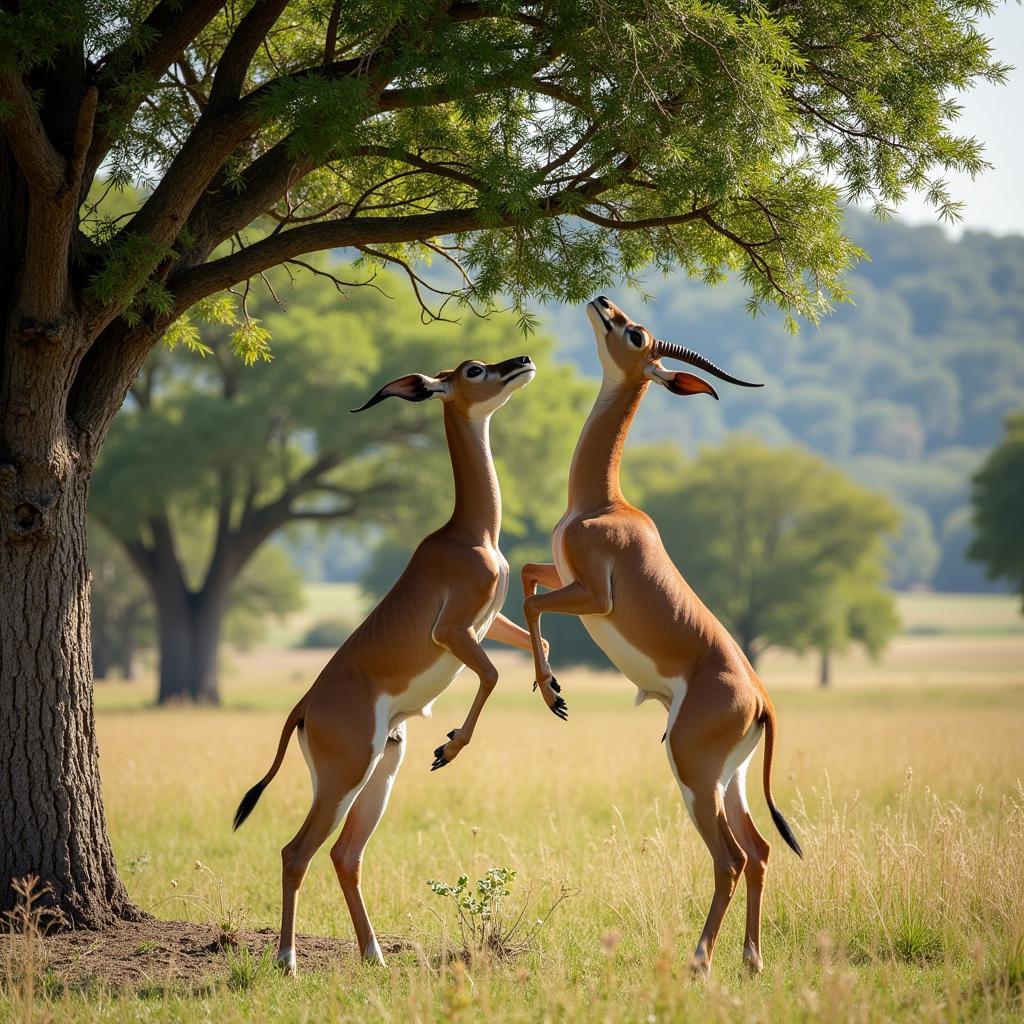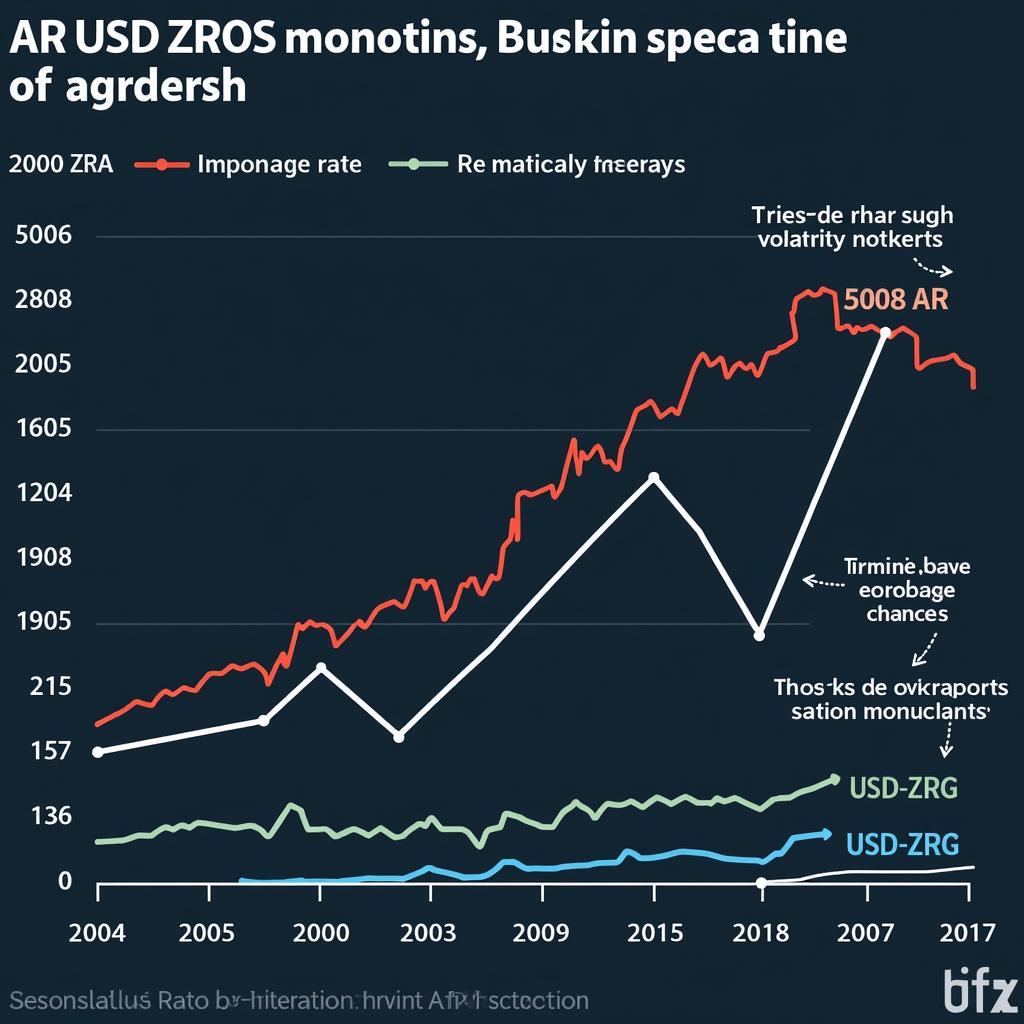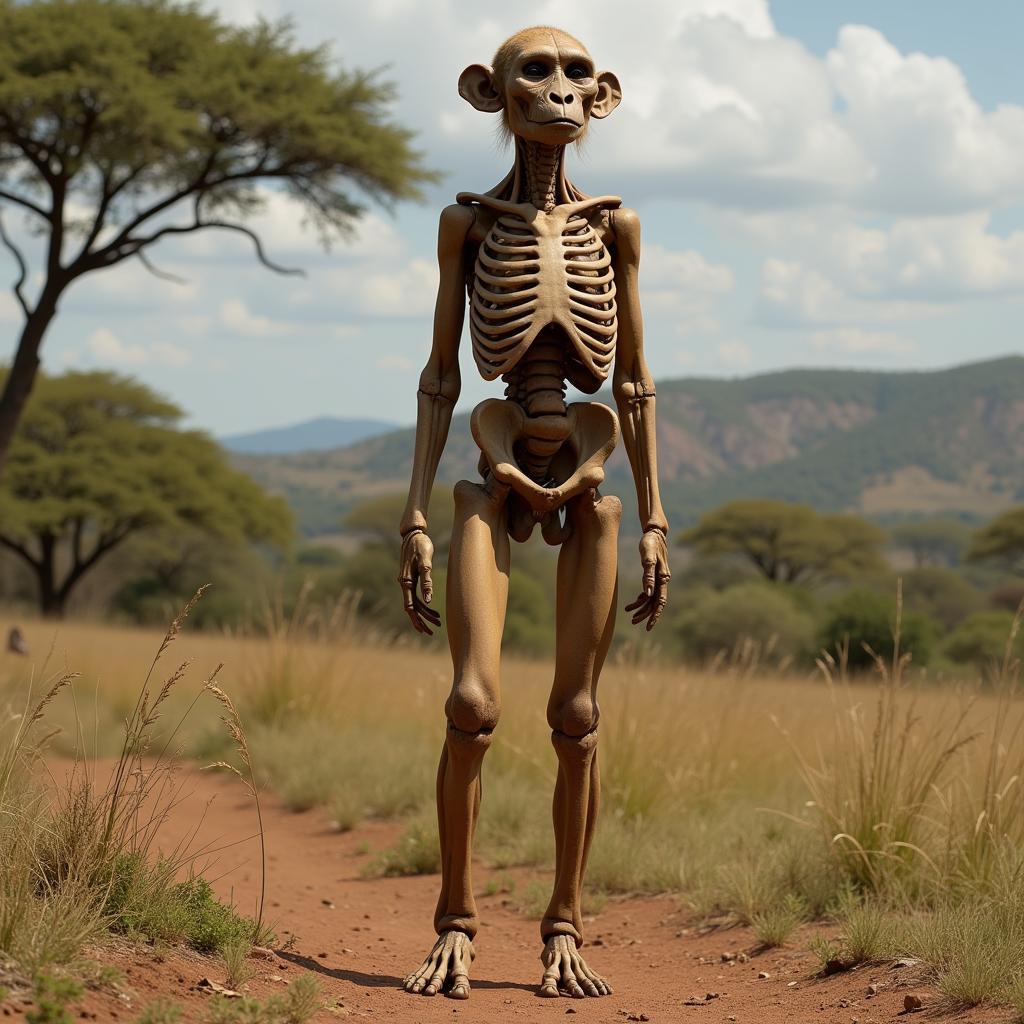The Enigmatic African Gazelle Gerenuk: A Master of Adaptation
The African Gazelle Gerenuk, also known as the Waller’s gazelle, is a truly unique antelope found in the arid bushlands of East Africa. Its most striking feature? An exceptionally long neck and legs, allowing it to reach vegetation inaccessible to other grazers. This adaptation makes the gerenuk a fascinating subject of study for naturalists and wildlife enthusiasts alike. african gazelle
The Gerenuk’s Remarkable Physical Adaptations
The gerenuk’s distinctive physique is a testament to its evolutionary journey. Its elongated neck and legs are not just aesthetically pleasing; they are essential for survival in its harsh environment. These features enable the gerenuk to stand on its hind legs and browse on leaves and shoots high up in acacia trees and bushes. This browsing behavior gives it a significant advantage, minimizing competition for food with other herbivores.
Unique Features Beyond the Neck and Legs
Beyond its prominent neck and legs, the gerenuk possesses other interesting adaptations. Its small, narrow head helps it navigate through dense thickets, and its prehensile upper lip assists in grasping and pulling down leaves. Its coat, a fawn color with white underparts, provides excellent camouflage in its dry habitat. The gerenuk also boasts large, expressive eyes and relatively long ears, enhancing its awareness of potential predators. african gazelle species
The Gerenuk’s Diet and Habitat
The gerenuk is a specialized browser, primarily feeding on leaves, buds, flowers, and fruits of trees and shrubs. They are incredibly efficient at extracting moisture from their food, rarely needing to drink water. This ability is crucial for survival in their arid and semi-arid habitats, which include the dry savannas and thornbush scrublands of Ethiopia, Somalia, Kenya, and Tanzania.
“The gerenuk’s ability to thrive in such arid environments is truly remarkable,” says Dr. Amani Nkosi, a wildlife biologist specializing in East African ungulates. “Their dietary specialization and efficient water utilization are key to their survival in these challenging landscapes.”  Gerenuk browsing acacia leaves
Gerenuk browsing acacia leaves
Social Behavior and Reproduction
Gerenuk are typically solitary or found in small groups consisting of a female and her offspring. Males are territorial and often engage in aggressive displays to defend their territory and access to females. Breeding occurs year-round, and after a gestation period of approximately seven months, a single fawn is born. The fawn remains hidden for several weeks before joining its mother. african antelope breeds
Conservation Status and Threats
The gerenuk is classified as “Near Threatened” by the International Union for Conservation of Nature (IUCN). Habitat loss due to expanding human settlements and agriculture, as well as poaching, are the primary threats to their survival. Conservation efforts focus on protecting their habitat and combating illegal hunting.
“The gerenuk’s unique adaptations are not enough to shield them from the pressures of human activity,” notes Dr. Zuberi Hassan, a conservationist working in East Africa. “Protecting their remaining habitat is crucial for ensuring their long-term survival.”
What is the African Gazelle Gerenuk’s primary food source?
The African gazelle gerenuk primarily feeds on the leaves, buds, flowers, and fruits of trees and shrubs.
The Future of the African Gazelle Gerenuk
The future of the African gazelle gerenuk depends on continued conservation efforts to protect their habitat and mitigate threats. Raising awareness about their unique ecological role and the importance of preserving biodiversity is crucial for their long-term survival. The gerenuk, with its remarkable adaptations and graceful demeanor, is a true treasure of the African savanna and deserves our utmost protection. african antelope identification  Gerenuk in its natural habitat african genda animal
Gerenuk in its natural habitat african genda animal
In conclusion, the African gazelle gerenuk is a fascinating species with unique adaptations that allow it to thrive in harsh environments. By understanding their ecology and the threats they face, we can work together to ensure the survival of this remarkable antelope for generations to come.
FAQ:
- What is unique about the gerenuk? Its long neck and legs allow it to stand upright and browse high vegetation.
- Where do gerenuk live? They inhabit arid and semi-arid regions of East Africa.
- What do gerenuk eat? They primarily eat leaves, buds, flowers, and fruits.
- What is the gerenuk’s conservation status? Near Threatened.
- What are the main threats to gerenuk populations? Habitat loss and poaching.
- What is the gerenuk’s social structure? They are typically solitary or found in small family groups.
- How long is a gerenuk’s gestation period? Approximately seven months.
For further assistance, please contact us at Phone Number: +255768904061, Email: kaka.mag@gmail.com or visit us at Mbarali DC Mawindi, Kangaga, Tanzania. We have a 24/7 customer support team.



